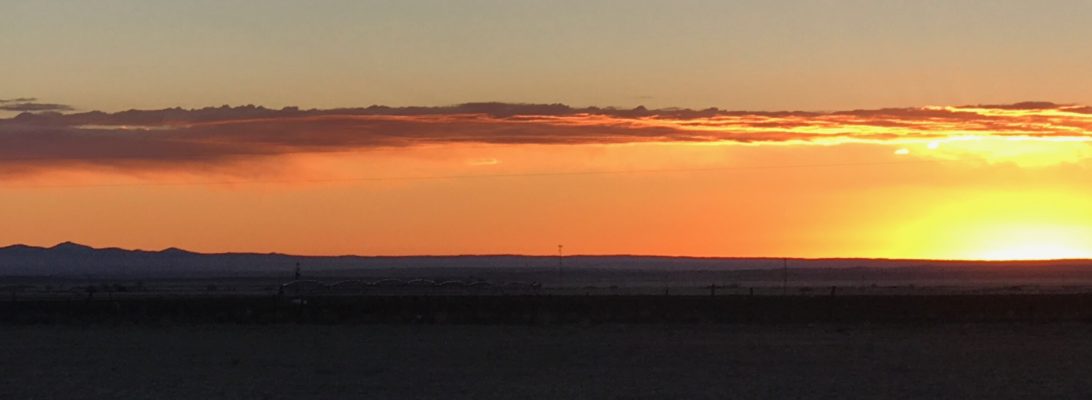
During 1890 the Ghost Dance was sweeping across many tribes in a spirit of revival and renewal against the great tide of colonial westward expansion forcing tribes onto reservations. The Army and Federal government were alarmed at the fervor and speed with which the Ghost Dance was spreading across Sioux territories. Authorities, fearing Sitting Bull’s power and spiritual authority, wanted to stop Sitting Bull from joining the Ghost Dance movement and made plans to arrest him.
On December 15, 1890, Chief Sitting Bull was shot and killed while being arrested on the Standing Rock Sioux Reservation, in North and South Dakota.[1] Some of Sitting Bull’s people fled quickly south and went to Chief Spotted Elk’s camp. At this point, Chief Spotted Elk, better known as Chief Big Foot, was living on the Cheyenne River Sioux Reservation south of Standing Rock and south of Sitting Bull’s people. Big Foot quickly made plans to travel southwest to Pine Ridge.
There are differing stories that claim Red Cloud invited Big Foot to join him in Pine Ridge; another story that Big Foot was fleeing for protection to Pine Ridge; another story that Big Foot had been invited to Pine Ridge for Ghost Dance with Red Cloud. In any case, Chief Big Foot’s Band left for Pine Ridge on December 23, 1890. They traveled at night under the cover of darkness and to keep warm. [2] They arrived near Porcupine Butte on December 28th and were ordered to camp at Wounded Knee Creek. They were encamped under a white flag of truce.[2] The army surrounded the tribal encampment, which included setting up of 4 Hotchkiss guns.[3] On the morning of December 29th, while army soldiers were collecting firearms from Big Foot’s band, a shot was fired. Thus ensued the rain of bullets from Hotchkiss guns and other army firearms on mostly unarmed men, women, and children: the Massacre at Wounded Knee of some 300+ people. [3] While 25 soldiers were killed, mostly from their own gunfire in the ensuing battle, 20 Congressional Medals of Honor were awarded to soldiers involved in the fight.
In 1990, the centenary of the massacre, the 101st US Congress made a formal apology to the Sioux people for the incident. In 2001 the National Congress of American Indians [NCAI] requested Congress to rescind the Medals of Honor.[3] This has not been done and remains an on-going request by many Oglala, Hunkpapa and other Sioux people.
For the past 25 years, the Chief Big Foot Band Memorial Riders have been riding, running and walking the route that Chief Bigfoot followed with his people before they were massacred 125 years ago at Wounded Knee by the United States Army, 7th Cavalry on Pine Ridge, South Dakota.
This year, to honor the 25th anniversary of the Chief Big Foot Band Memorial Ride and the 125th anniversary of the massacre, we inaugurate a 4 year cycle for global ceremony to end massacre and all that massacre means … to finally begin to heal our hearts…at Wounded Knee. 
